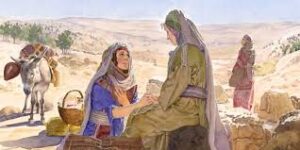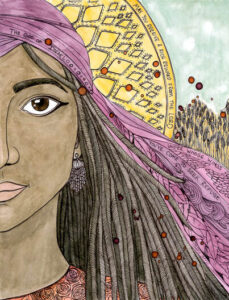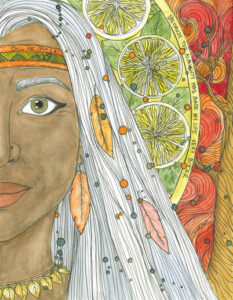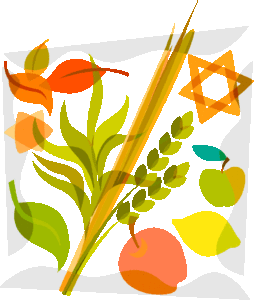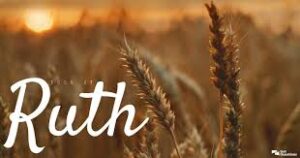Am – ADONAI’S Hand Has Turned Against Me 1: 11-13
ADONAI’S Hand Has Turned Against Me
1: 11-13
ADONAI’s hand has turned against me DIG: What arguments did Na’omi make to support her argument that her daughters-in-law return to Mo’ab? What was her motivation? Was she being selfish or selfless? Ruth and Orpah could only find rest in marriage. How was Isra’el’s position similar then? How is Isra’el’s position similar now? How is this position similar to the congregations of God today? How were Job’s and Na’omi’s feelings similar?
REFLECT: Do you know anyone who is hurting with loss like Na’omi was? If so, what can you do to help them? Describe a time when you have been angry with God? What did you do to resolve it? Have you resolved it? How can you help others?
The two daughters-in-law started off with Na’omi, but down the road she stopped and urged them not to continue to Judah. She even prayed for them that the LORD would be kind to them and find them new husbands and give them rest after all their sorrow. But when Na’omi saw them hesitating, she said: Return (shuwb) home, my daughters. Why would you come with me? Na’omi gave her daughters-in-law three reasons why it would be impossible for them to find joy if they returned to Y’hudah.
First, she could not produce any more sons for them to marry: Am I going to have any more sons in my internal organs who could become your husbands (1:11)? Na’omi’s word choice here seems to add a touch of deeply felt emotion to her statement. The usual word for womb (Hebrew: rechem) is not used. Instead the word for internal organs, (Hebrew: me’im) is used which connotes more generally the abdomen or “guts.” The word hints at Na’omi’s sadness at neither having nor hoping for any more sons and facing her last years without her family.27 She couldn’t even say the word womb. It was too painful. So the answer was no, your best chance for marriage lay in Mo’av, not in Beit-Lechem.
But this very impossibility hints at an important possibility . . . a future marriage as the means to provide Na’omi with an heir. More importantly, this depressing scene prepares the reader for the story’s conclusion. Only God can do the impossible. But for the present, that hope is nowhere on the horizon.
Return (shuwb) home, my daughters; second, she was too old to remarry: I am too old to have another husband. If I should say there was still hope for me – even if I had a husband tonight and then gave birth to sons. It is worth noting that she does not use the usual construction for a conditional clause. Normally, the word if I should say (Hebrew: amar) would be expressed in the imperfect tense denoting various possibilities. Na’omi, however, uses the perfect tense, meaning the situation was just as real as if it had actually happened. It was as if she was saying, “Even if I have a husband tonight and give birth to two sons.” By doing so she brings out the absurdity of her proposition.28
Then using over-exaggeration to make her point she says: Would you wait until they grew up? One almost hears the ironic echo of Y’hudah’s request that Tamar wait until Shelah grew up to get married (see the commentary on Genesis, to see link click Jd – Judah said to Tamar: Live as a Widow Until My Son Shelah Grows Up), an idea feasible in her case, but virtually impossible in Na’omi’s. Would you remain unmarried for them? Then Na’omi answered her own question: Absolutely not, my daughters (1:12-13a). But it is interesting that she did not mention finding husbands for them in Y’hudah itself. This was probably because they were Moabites. They needed to remarry, have children and enjoy life. In the ancient Near East a woman without a husband was in serious trouble because she lacked security.

Then Na’omi cried out of her wounded heart. But, her focus shifted from arguments for the women not coming with her, to accusation against the LORD. It is more bitter for me than for you, because ADONAI’s hand has turned against me (1:13)! Job felt the same way when he declared: I swear by the living God, who is denying me justice, and by Shaddai, who has made my life bitter (Job 27:2 CJB). He repeatedly accused Ha’Shem of injustice (Job 6:4, 7:20, 10:2-3, 13:24, 16:12-13, 19:7 and 23:14), and of giving him inner bitterness (Job 3:20, 7:11, 10:1 and 23:2).
Na’omi and her daughters had each lost a husband. Na’omi had lost a husband and two sons as well. Thirdly, she thought she was cursed. Na’omi felt that she was the target of God’s overwhelming power and wrath. Thus, Na’omi made her most crucial point. If even YHVH was after her, to follow her back to Judah was to court personal disaster. Her earlier tragedies – famine, exile, bereavement, and childlessness – might only be the beginning. One ought to shun that person to escape the turmoil of her misfortune. What better argument to make to return to Mo’av attractive? Na’omi had built an airtight cause for not being connected to her.29
Based on this text the rabbis teach that there must be an attempt to talk a would-be Gentile proselyte to Judaism out of it three times because by the fourth time he or she should be converted.
But Na’omi seemed a bit insensitive to the grief of her daughters-in-law. She thought that her case was more bitter than theirs because they still had potential for childbearing. She regarded her plight a result of the hand of God. All that had happened to her was not merely bad luck. Na’omi was apparently in a stage of grief that caused her to speak in anger against YHVH. And yet she was still a woman of faith. She had no doubt that the LORD was actively involved in their lives. She saw ADONAI as sovereign and the ultimate Master of her destiny. Who else could straighten out her dilemma?30
What does faith in YHVH mean in times of suffering? Later we can look back on our pain and sometimes discern good that has come from it. Often, we can believe, suffering confronts us as no other experience can, with the brevity and frailty of our lives. Suffering can open to us deeper dimensions of the spiritual life. The LORD can be a pathway to growth and maturity of character: pain can heal. But at the time it does not feel like that. At the time, as Na’omi’s experience bears witness, the essence of trust, throughout the experience of affliction, is to humbly bow beneath ADONAI’s hand from whom we feel the blow, in the firm belief that despite all outward appearances, it is the hand of a loving Father.31
Dear Great and Loving Father, When we look at our trials, they seem so big, but when we lift our eyes to stare at how Mighty You are-then our problems look so much smaller. How true it is – Big problem – small God – Big God, small problem. Please help us to keep our eyes on the eternal joy that You will give Your children in heaven. For I consider the sufferings of this present time not worthy to be compared with the coming glory to be revealed to us (Romans 8:18). In heaven there will be no tears, pain or anything that causes sadness. He shall wipe away every tear from their eyes, and death shall be no more. Nor shall there be mourning or crying or pain any longer, for the former things have passed away.”(Revelation 21:4).
We praise You for being able to conquer any road block that stands in our way of serving you. You are in complete control of all that comes across our path. There is no army, no nation, no pandemic that is more powerful that you. At the end of the 7 years of Tribulation when Satan gathers all the nations to fight against You, You will defeat them without even a battle for, From His mouth comes a sharp sword – so that with it He may strike down the nations – and He shall rule them with an iron rod, and He treads the winepress of the furious wrath of Elohei-Tzva’ot. On His robe and on His thigh He has a name written, “King of kings, and Lord of lords” (Revelation 19:15-16).
We love and praise You and desire to please You by our living with a trusting heart in you Almighty power and Awesome love! In your holy Son’s name and power of resurrection. Amen



